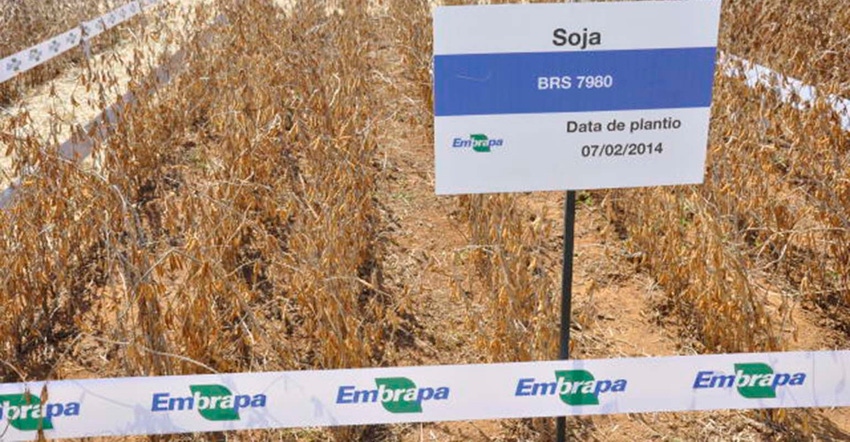
With Brazilians having planted 96% of the projected 87.2 million-acre soybean crop by late last week, I got to thinking of the crop’s meteoric rise. One of the country’s early attempts at bean production was just 1,700 acres, according to Amelio Dall’Agnol. And he ought to know.
I first met Amelio Dall’Agnol at an agricultural fair in southern Brazil about 15 years ago. He’s a famous soybean researcher. He gave a presentation on soybeans in South America at the Embrapa facility on the fairgrounds. Embrapa is the Brazilian government’s agricultural research agency. Dall’Agnol, with a doctorate from the University of Florida, has written around 80 scientific papers on ag.
135 years
Dall’Agnol writes in a blog that 2017 marks the 135th year of soybean production in Brazil, a production that started out, as it did in the United States, rather timidly. Varieties were brought from the United States and planted in latitudes too tropical for success. It wasn’t until the 1940s that they tried planting the legume farther south in Brazil, in latitudes that approximated the U.S. South.
At that time, producers got yields of about 10½ bushels per acre on about 1,700 acres down in Brazil’s southernmost state of Rio Grande do Sul. But despite production numbers that look like a total failure by today’s standard, that was the same year the country’s first crushing facility was built. Over the next decade, production grew to 25,000 tonnes. And by 1979, it had reached 15 million tonnes.
From 15 million tonnes to 87 million tonnes
The main reason beans took hold in more temperate, southern Brazil, he points out, is that a producer could follow it with wheat. But the reason it spread ever farther North, toward the equator, was because plant breeders had figured out how to overcome the same problems that had made the crop something of a flop years earlier in the state of Bahia: tropical lengths of day just weren’t signaling the plants when to do what it’s supposed to do. That fact, and the bargain-basement prices of land across the central and northerly parts of Brazil, made beans spread wildly. Farms down south kept getting smaller as they were handed down along the generations, but for those pioneers who could put up with an almost total lack of infrastructure, one could buy six or more acres of virgin land farther north for each acre of established land down south.
But it’s also been export demand, too. Brazil has forever been a commodity-exporting country. First it was Brazil wood (from which the country gets its name) that produces beautiful purple dye European royals paid lots of money for. Then it was sugarcane in colonial times. After that, coffee was king. But now it’s soybeans, representing an annual income of around $30 billion, or about 15% of all the country’s exports, including sugar, ethanol, corn, short-hop airplanes, coffee and iron ore.
Outlook for continued growth
Aside from the normal points of world population growth and the increase of purchasing power among the Chinese, Dall’Agnol points out that prospects for beans in Brazil’s future look good because “soybean production in Brazil’s two main competitors (the USA and Argentina) will tend to remain stable and even come down due to a lack of available expansion in their territories, or a need to make use of marginal areas.” Brazil’s got about 125 million acres of cerrado land and degraded pasture that can be put to use growing more beans.
But they’ve still got a long way to go to get their transportation costs—both to and from the farm—down. America’s big advantage right now is infrastructure, and more work on locks and dams ought to be a priority in the face of Brazil’s ferocious (and impressive) growth.
The opinions of the author are not necessarily those of Farm Futures or Farm Progress.
About the Author(s)
You May Also Like






